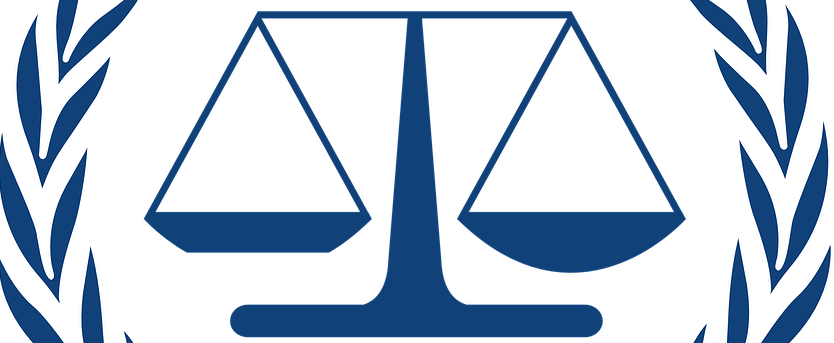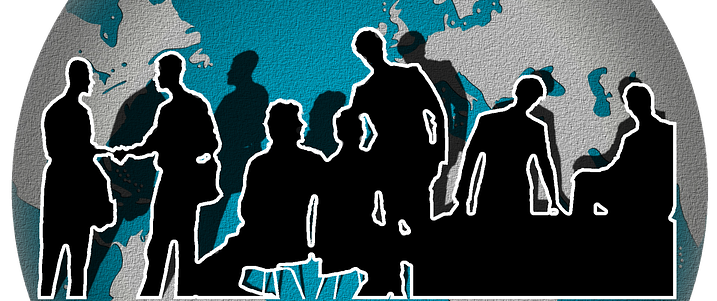The Stress Bundle: summaries, suggestions and tips on stress and stress reduction
Content and contributions of WorldSupporters about stress and stress reduction
The Stress Bundle
 Studiegids voor samenvattingen bij Why Zebras Don’t Get Ulcers: The Acclaimed Guide to Stress, Stress-Related Diseases, and Coping van Sapolsky
Studiegids voor samenvattingen bij Why Zebras Don’t Get Ulcers: The Acclaimed Guide to Stress, Stress-Related Diseases, and Coping van Sapolsky
Studiegids met samenvattingen en studiehulp voor:
- Boektitel: Why Zebras Don’t Get Ulcers
- Subtitel: The Acclaimed Guide to Stress, Stress-Related Diseases, and Coping
- Auteur: Sapolsky
- Druk: 3e druk
 How does stress work? - Chapter 11 - Exclusive
How does stress work? - Chapter 11 - Exclusive
This chapter explores the sources of stress, the factors that can make the experience of stress easier or more difficult, and the ways that stress influences someone's physical and mental health. The difference between distress and eustress will be explained. It will be explained what stressors are, and some stressors will be mentioned. Health psychology will be described. This chapter will also explain how personality types and attitudes can influence people's reaction to stress. Lastly, this chapter will focus on ways to cope with stress through social-support systems, cultural differences, and religious beliefs.
What is the relationship between stress and stressors?
Stress is the term used to describe the physical, emotional, cognitive, and behavioral responses to events that are appraised as threatening or challenging. There are a lot of different symptoms of stress, such as fatigue, sleeping problems, frequents colds, chest pains, and nausea. There are also behavioral symptoms of stress, such as eating too much, crying a lot, smoking, and drinking. Emotional symptoms can be anxiety, depression, anger, and frustration. Mental symptoms of stress include problems in concentration, memory, decision making, and sense of humor. Most people experience some stress on a daily basis.
Stress-causing effents are called stressors. There are two kinds of stressors:
- Stressors that cause distress. These are unpleasant stressors.
- Stressors that cause eustress. These are positive events that still make demands on a person to adapt or change.
Stressors can come from within a person or be external. External stressors are for instance environmental stressors, major life changes, but also hassles. Hassles are the daily little annoyances. We think of causes of stress as big events, but most of the time, our stress comes from little frustrations, delays, irritations, or disagreements. There are different reasons for why something is a stressor/gives us stress:
- It puts pressure on us. Time pressure is one of the most common forms of pressure.
- It is uncontrollable. Lack of control increases stress.
- It frustrates us. People are frustrated when they are blocked or prevented from achieving a desired goal or fulfilling a perceived need.
- It brings us in conflict between two or more competing and incompatible desires, goals, or actions.
What are physiological factors or stress?
When the human body is subjected to stress, the sympathetic nervous system reacts. This system is better known as the 'fight-or-flight' system. Endocrinologist Hans Selye studied the sequence of physiological reactions that the body goes though when adapting to a stressor. This sequence is called the general adaptation syndrome (GAS) and consists of three stages:
- Alarm: the sympathetic nervous system is
 How do stress, coping, adaptation and health affect personality? - Chapter 18 - Exclusive
How do stress, coping, adaptation and health affect personality? - Chapter 18 - Exclusive
Health psychology focuses on the influence of psychological and behavioral factors on health, often in combination with the environment. Stress is central to this.
What models of personality are there?
What is the interactional model?
The interactional model suggests that personality factors determine the impact of events, because they determine how someone deals with the situation. Personality would thus influence coping. How someone deals with an event determines the degree of stress caused by that event. However, a limitation of this model is that stable coping strategies have never been found.
What is the transactional model?
The transactional model does things differently. According to this model, personality has three potential effects:
- Personality can influence coping.
- Personality can affect how the person interprets an event.
- Personality can influence the event itself.
It is not the event that causes stress here, but rather how it is dealt with. This model is called transactional because of the person's influence on the event and the person's appreciation. There is mutual influence.
What is the health and behavior model?
A third model is the health and behavior model. This assumes that personality does not directly influence the degree of stress or illness, but that it indirectly influences stress or illness through certain behaviors, such as unsafe sex or overeating. The less healthy someone is, the greater the chance of experiencing more stress.
What is the disease and behavior model?
Another model is the disease and behavior model. In this model, disease is explained as the presence of an objectively measurable abnormal physiological process, such as fever, high blood pressure, or a tumor. Abnormal or sick behavior is about the way people behave when they think they are sick. Personality determines the degree of sick behavior, whether or not in combination with a real illness.
According to the predispositional model, associations exist between personality and illness because of a third variable that affects both, namely predisposition. The predisposition can exist for stable individual personality differences and for specific illnesses.
What is stress?
Stress is a subjective feeling that is the result of uncontrollable and threatening events (stressors). These are often extreme situations with unpleasant consequences that cannot be influenced. Stress can be divided into low sources of stress in daily life (daily hassles) and important life events (major life events). Major life events are associated with intensity, conflict and uncontrollability. Positive things can also be very stressful, for example a marriage, a move or a promotion. People with a lot of stress in their lives have many psychological and physiological symptoms. Possible responses to stress may include palpitations, increased blood pressure, sweaty hands and feet, and
.....read more  How can stress be managed? - Chapter 13 (4th edition) - Exclusive
How can stress be managed? - Chapter 13 (4th edition) - Exclusive
What theories about stress are there?
Stress management training is the general term for interventions developed to teach participants how to handle stress. These interventions are based on cognitive-behavioral theories of stress, which consider stress as the result of an outcome of various environmental and cognitive processes. Stress is seen as a negative emotional and physiological state that is the result of cognitive responses to events that happen to us. That is why stress is seen more as a process than an outcome.
Beck and Ellis assumed that our cognitive responses to events - not the events themselves - determine our mood and that feelings of stress or other negative emotions are the result of wrong or irrational thinking. This means that the emotions are the result of misinterpretations of events or cognitions.
Beck has identified different categories of thinking that lead to negative emotions, namely:
Catastrophic thinking: if an event is considered negative and possibly dangerous.
Over-generalization: when a negative conclusion is drawn as a result of just one incident.
Arbitrary inference: draw a conclusion without sufficient evidence.
Selective abstraction: focus on a detail outside the context.
What does stress management training entail?
The stress response model suggests a series of factors that can be changed by reducing the stress of an individual. Examples of this are:
Environmental events that trigger the stress response.
Inappropriate behavioral, physiological, or cognitive responses that occur in response to the event.
Most stress management programs focus on changing people's responses to events that happen around them. Triggers can be identified and modified using problem-solving strategies. In addition, wrong thoughts can be identified and changed by a number of cognitive techniques, such as cognitive restructuring. Hereby automatic negative or catastrophic thoughts are brought up to bring them more in line with reality.
Changing triggers
The triggers that lead to stress are different for each person. A good approach to combat stress is therefore to investigate which triggers lead to stress in a person and how these triggers can be reduced. One of the most commonly used approaches to identify and change triggers is that of Egan. Stress triggers are identified and changed through three phases:
Problem exploration and clarification: what are the triggers that lead to the stress?
Goal setting: which triggers does the person want to change?
Facilitating action: how do they set about changing these stress triggers?
 How to Handle Stress? 12 life hacks
How to Handle Stress? 12 life hacks
- What is stress?
- 12 life hacks to Handle Stress - Based on neuroscience
- Life hack 1 to handle stress: Sleep
- Life hack 2 to handle stress: Exercise
- Life hack 3 to handle stress: Nature
- Life hack 4 to handle stress: Food
- Life hack 5 to handle stress: “Acting as if”
- Life hack 6 to handle stress: Physical contact
- Life hack 7 to handle stress: Deep breathing
- Life hack 8 to handle stress: Progressive muscle relaxation
- Life hack 9 to handle stress: Autogenic training
- Life hack 10 to handle stress: Gratitude
- Life hack 11 to handle stress: Building on Success
- Life hack 12 to handle stress: Labeling and reframing
- Source
What is stress?
75 to 95 percent of visits to the doctor are for stress-related conditions
Allostatic load: a physiological and neurological state caused by your body being on constant alert. It damages your health and cognitive performance
- Prolonged levels of high cortisol (stress hormone) in the bloodstream lead to shrinkage of the hippocampus, which is important for long-term memory and the intake of new information
- Stress causes a reduction in serotonin in the brain, which can lead to depression and burnout
- The more stress we perceive, the more overactivated our amygdala becomes. As a result, chronically stressed people become hypersensitive to any potential stressor
Key to emotional regulation: strengthening your ability to handle stress and training the conscious mind to control our primitive/automatic responses.
12 life hacks to Handle Stress - Based on neuroscience
Life hack 1 to handle stress: Sleep
- Sleeping a sufficient amount helps us withstand stresses and aggravations
- Sleep loss:
- makes us more short-tempered, impatient, and moody
- diminishes our ability to judge the emotions in other people’s faces
- interferes with decision making, productivity
- increases our risk of cardiovascular and gastrointestinal problems
Life hack 2 to handle stress: Exercise
- Engaging in regular exercise:
- Improves our cognitive test scores
- Enhances our long-term memory, reasoning and attention
- Makes us better at problem-solving and fluid intelligence tasks
- Regulates the release of serotonin, dopamine, and noradrenaline
- Eases depression and anxiety
- Makes us less tense and more refreshed
Life hack 3 to handle stress: Nature
- Time spent in nature can improve emotional regulation and diminish stress
- Even sitting by the window, or looking at pictures of nature can make us feel more at ease
Life hack 4 to handle stress: Food
- Change in nutrition changes our mental fitness
- There are certain foods that enhance our emotional well-being:
- Nutrient-rich vegetables and fruits
- Healthy fatty acids, such as olive and canola oils
- Protein in moderate quantities
- Whole-grain complex carbohydrates, such as oatmeal
Life hack 5 to handle stress: “Acting as if”
- According to the facial feedback hypothesis, our physical expressions send signals to our brains to produce the appropriate emotional response
- Studies have found that by simply putting a pencil in our mouth and thus being forced to smile actually makes us happier
- Expansive posture makes us feel more confident:
- Crossing legs instead of keeping them together
- Draping an arm over the back of a chair instead of placing hands under legs etc.
Life hack 6 to handle stress: Physical contact
- Physical contact in general has been shown to reduce stress more than soothing words
- Giving or receiving a hug can trigger a huge release of oxytocin
- Even shaking hands can release a bit of oxytocin and make us have a greater sense of connection
Life hack 7 to handle stress: Deep breathing
- Deep breathing makes us more relaxed
- How to do it:
- Inhale through your nose
- Use each new breath to expand your abdomen instead of your chest
- When you exhale do it through your mouth, slowly
Life hack 8 to handle stress: Progressive muscle relaxation
- This method strengthens our ability to recognize and remedy feelings of stress
- How to do it:
- Tense a muscle group in your body
- Relax that muscle group
- Move onto the next muscle group and repeat until you feel you have moved through all parts of your body
Life hack 9 to handle stress: Autogenic training
- This practice increases our awareness and control of our autonomic nervous system, enabling us to switch from our sympathetic nervous system to the more soothing parasympathetic system
- Ways to do it:
- By sitting quietly and comfortably and focus on a sound, word, phrase or object
- By consciously focusing on relaxing your body
- By shifting your posture and moving around frequently
Life hack 10 to handle stress: Gratitude
- A change in attitude follows a change in self-image and stress levels
- Gratitude is about redirecting your attention, instead of suppressing something
- 3 weeks of gratitude training has been shown to improve personal well-being, psychological health and to increase energy levels
- Gratitude should be directed on people or things around us that make life better
- A simple way to practice gratitude is by writing down 3 to 5 things each morning you are grateful for
Life hack 11 to handle stress: Building on Success
- Approaching difficult tasks as challenges rather than threats has a positive effect on our emotions
- How to do it:
- Whenever you make a mistake, dismiss it as temporary
- Gain support from someone you respect
- Compare yourself favorably to your peers (“If they can do it, so can I”)
- Celebrate your small victories
Life hack 12 to handle stress: Labeling and reframing
- Acknowledging our feelings in words helps us regain control
- Finding a way to interpret setbacks in a more positive way helps our emotional well-being
Source
- Based on the book: The Leading Brain: Neuroscience Hacks to Work Smarter, Better, Happier by Hans W. Hagemann and Friederike Fabritius
 Welke soorten stress heb je en wat zijn de effecten op je lichaam en je geest?
Welke soorten stress heb je en wat zijn de effecten op je lichaam en je geest?
Er bestaan verschillende soorten stress, elk met hun eigen kenmerken en effecten op lichaam en geest. Hieronder bespreken we enkele van de meest voorkomende types:
1. Acute stress:
- Dit is een kortdurende, intense stressreactie die wordt veroorzaakt door een plotselinge gebeurtenis, zoals een ongeluk, een schrikmoment of een deadline.
- De lichamelijke symptomen van acute stress zijn onder andere een verhoogde hartslag, transpiratie, spierverspanning en een versnelde ademhaling.
- Acute stress kan ook leiden tot cognitieve symptomen, zoals angst, paniek en verwardheid.
- Hoewel acute stress onaangenaam kan zijn, is het in principe onschadelijk en kan het zelfs nuttig zijn. Het kan ons lichaam mobiliseren om te reageren op gevaar of een uitdaging.
2. Chronische stress:
- Dit is langdurige stress die gedurende een langere periode aanhoudt, vaak weken, maanden of zelfs jaren.
- Chronische stress kan worden veroorzaakt door verschillende factoren, zoals een hoge werkdruk, financiële problemen, relatieproblemen of een chronische ziekte.
- De symptomen van chronische stress zijn vaak subtieler dan die van acute stress, maar kunnen net zo schadelijk zijn. Deze symptomen kunnen lichamelijke klachten veroorzaken, zoals hoofdpijn, spierpijn, maagproblemen, slaapproblemen en vermoeidheid. Chronische stress kan ook leiden tot psychische klachten, zoals angst, depressie, burn-out en concentratieproblemen.
3. Eustaatse stress:
- Dit is een positieve vorm van stress die wordt veroorzaakt door opwinding, uitdaging of plezier.
- Eustress kan ons motiveren om te presteren en te leren, en kan ons een gevoel van voldoening geven.
- In tegenstelling tot acute en chronische stress, is eustress in principe onschadelijk en zelfs gezond.
4. Episodische acute stress:
- Dit is een type stress die gekenmerkt wordt door frequente episodes van acute stress.
- Mensen met episodische acute stress ervaren vaker angst en bezorgdheid, en hebben het gevoel dat hun leven chaotisch is.
- De oorzaken van episodische acute stress kunnen divers zijn, zoals een traumatische ervaring, een angststoornis of een chronische aandoening.
5. Schadelijke stress:
- Dit is de meest ernstige vorm van stress die kan leiden tot ernstige lichamelijke en psychische problemen.
- Schadelijke stress kan worden veroorzaakt door extreme gebeurtenissen, zoals een natuurramp, een oorlog of een ernstige mishandeling.
- De symptomen van schadelijke stress overlappen met die van chronische stress, maar zijn vaak intenser en langduriger. Schadelijke stress kan leiden tot posttraumatische stressstoornis (PTSS), hart- en vaatziekten, depressie en andere ernstige gezondheidsproblemen.
Verschillen tussen de soorten stress:
- Duur: Acute stress is kortdurend, chronische stress is langdurig.
- Ernst: Eustress is mild, schadelijke stress is ernstig.
- Effecten: Acute stress kan ons mobiliseren, chronische stress kan leiden tot lichamelijke en psychische klachten. Eustress kan ons motiveren, schadelijke stress kan leiden tot PTSS en andere ernstige gezondheidsproblemen.
 “DSM-5. Posttraumatic stress disorder.” – Article summary
“DSM-5. Posttraumatic stress disorder.” – Article summary
The clinical presentation of PTSD varies. It is not entirely clear what is seen as a traumatic event and what is not. A life-threatening illness or medical condition is not seen as trauma but medical incidents can qualify as traumatic events (e.g. waking up during surgery), same as a medical catastrophe in one’s child.
Intrusive recollection is not the same as depressive rumination. Intrusive recollection applies to involuntary and intrusive distressing memories. It can be short (e.g. flashback) but can lead to prolonged stress and heightened arousal.
In PTSD, there often is a heightened sensitivity to threats. Developmental regression (e.g. loss of language) may occur in children. PTSD can lead to difficulties in regulating emotions or maintaining stable interpersonal relationships.
The lifetime prevalence of PTSD is 8.7% in the United States and the twelve-month prevalence is 3.5%. These estimates are lower in many other countries (e.g. European countries). Different groups have different levels of exposure to traumatic events. The conditional probability of developing PTSD following a similar level of exposure may differ between groups.
Cultural syndromes (e.g. ataques de nervosia) may influence the expression of PTSD. The risk of onset of PTSD and severity may differ across cultural groups as a result of:
- Variation in the type of traumatic exposure (e.g. genocide).
- The meaning attributed to the traumatic event.
- The ongoing sociocultural context.
- Other cultural factors.
PTSD appears to be more severe if the traumatic event is interpersonal and intentional (e.g. torture). The highest PTSD rates are found among rape survivors (1), military combat and captivity survivors (2) and ethnically and politically-motivated internment and genocide survivors (3). Young children and older adults are less likely to show full-threshold PTSD.
The symptoms and relative predominance of symptoms may vary over time. Symptom recurrence and intensification may occur in response to reminders of the original trauma (1), ongoing life stressors (2) and newly experienced traumatic events (3). PTSD symptoms may exacerbate as result of declining health (1), worsening cognitive functioning (2) and social isolation (3).
Individuals who continue to experience PTSD into older adulthood may express fewer symptoms of hyperarousal (1), avoidance (2) and negative cognitions and moods (3) compared with younger adults. However, adults exposed to traumatic events during later life may display more avoidance (1), hyperarousal (2), sleep problems (3) and crying spells (4) than younger adults exposed to the same traumatic event.
There are several pre-trauma risk factors for the development of PTSD:
- Temperamental
This includes childhood emotional problems by age 6 and prior mental disorders. - Environmental
This includes lower socioeconomic status (1), lower education (2), exposure to prior trauma (3), childhood adversity (4), cultural characteristics (5), lower intelligence (6), minority status (7) and family psychiatric history (8). - Genetic and physiological
This includes being female and being younger at the time of trauma exposure.
There are several peritraumatic
.....read more  The Sapolski Bundel: samenvattingen en oefenmateriaal voor 'Why Zebras Don’t Get Ulcers' (NL)
The Sapolski Bundel: samenvattingen en oefenmateriaal voor 'Why Zebras Don’t Get Ulcers' (NL)
Samenvattingen, studiehulp en oefenmateriaal voor gebruik bij het boek 'Why Zebras Don’t Get Ulcers: The Acclaimed Guide to Stress, Stress-Related Diseases, and Coping' van Sapolsky
 The Sapolski Bundle: summaries for Why Zebras Don’t Get Ulcers
The Sapolski Bundle: summaries for Why Zebras Don’t Get Ulcers
The Sapolski Bundle: Summaries and exams for why Zebras Don’t Get Ulcers
The Acclaimed Guide to Stress, Stress-Related Diseases, and Coping
 Skills: per competence, emotion, skill or value
Skills: per competence, emotion, skill or value
Bundeld bundles per competences, emotion, skill and value
- 1925 reads







































































